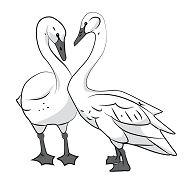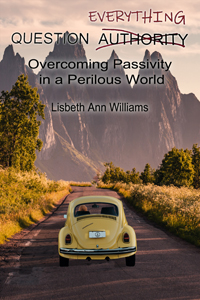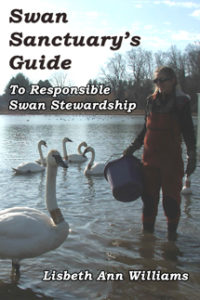- Past Experience
It is difficult to say exactly when Lisbeth, founder and owner of Swan Sanctuary, fell in love with her webbed footed, feathered friends. It may have been at the age of three when her grandparents bought her a duck for Easter and the duck imprinted on her and followed her everywhere. It was many years later, however, after her daughters were raised, and at mid-life she decided that she wanted property with a pond – and swans to swim on it.
Thus began the journey which would eventually land her in Warrenton, Virginia, less than five miles from the renowned Swan Research Program and Dr. William Sladen. Upon her discovery, she immediately jumped feet first into volunteering. She got to know firsthand, the swans in the collection of more than ninety, and her main duties were feeding and making regular observations. A few months later she was put in charge of raising cygnets that were hatched artificially, in an incubator. As time went on, she was also asked to assist with feather clipping and banding and caring for swans in rehabilitation. She continued to learn all that she could about the swans and began to formulate a plan to create a sanctuary. After volunteering several hours per week and using her own vehicle and gas for nearly five years, the last biologist in charge moved on; and she was asked to take over care of the collection. This was exactly what was needed to jump start Swan Sanctuary, which was officially begun September 1st, 2010.
After launching Swan Sanctuary in 2010, Lisbeth continued to provide care as contractor/consultant for the remaining collection of ultra-light swans and their descendants. The collection also included numerous hybrids. She provided services for other swan owners in the area as well. Some of the services she provided were regular observations, constant monitoring and providing supplemental feeding. She was responsible for maintaining, repairing & replacing of feeders, maintaining the islands for nesting, monitoring egg clutches, incubation, and hatching, erecting and dismantling traps, trapping birds for feather clipping or pinioning, banding, responding to swan emergencies and attending necropsies when swans had died of unknown causes. In addition, she installed rafts and deicers to maintain open water for the swans in winter. She made site visits to other locations to determine suitable pond habitat for those interested in having swans; and last, but not least, provided swan rescue service.
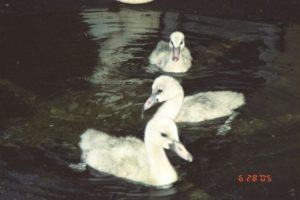
- William Sladen & the Ultra Light Experiment
Dr. William J. L. Sladen, after hearing of the Canadian, Bill Lishman who had taught the Canada Geese a migration route using an ultra light aircraft, wanted to pursue the same experiment with the Trumpeter Swan. The movie Fly Away Home was inspired by the undertaking with Canada geese, which had proved quite successful. Dr. Sladen carried out a similar experiment with three trials spanning from 2000 to 2003. The migration project began at Airlie Conference Center in Warrenton, Virginia. It was headed up by Gavin G. Shire and Dr. William J L Sladen. A detailed summary may be found in Ultra Swan Project by Elinor Osborn. The study ended after the third year. It had been costly, dangerous, and disappointing. Following the project’s end, the swans were retired at Airlie. Research continued through the Swan Research Program, which remained under the umbrella of the larger entity, Environmental Studies on the Piedmont. Sadly, Bill Sladen passed away in May of 2017 and will continue to be missed by many. Swan Sanctuary wishes to carry on Dr. William Sladen’s vision and hopes to one day be instrumental in awakening the world to the wonder of swan migration.
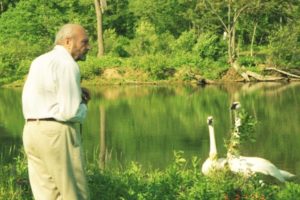
- Lisbeth’s Vision
Swan Sanctuary adds its voice to those working for the restoration of the Trumpeter Swan. Through the efforts of the sanctuary, combined with other devoted organizations, this beautiful bird will once again grace our skies on its twice annual journey, trumpeting its gleeful song. Through public presentations, and the publication of Lisbeth’s book, Swan Sanctuary’s Guide to Responsible Swan Stewardship, the swan will once again be embraced by the public, as it was for millennia; to stand equally as beloved as the Emperor Penguin, the Polar Bear and the Dolphin in our modern world. As a self-supporting sanctuary, an ideal location with superior habitat will provide a home base where blinds will allow for public viewing.
When the sanctuary has reached the point where it is making a profit above and beyond its operating needs, it will use surplus funds to purchase more land with ponds and lakes where prime wetland habitat may be restored.

